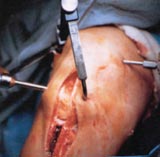
Biotechnology in Sports Medicine is becoming increasing relevant to young athletes. Throughout our blog, we have explored preventative techniques and treatment options for three main injuries associated with baseball, basketball, and rowing. We have noticed a growing trend in early specialization in specific sports, and there seems to be mounting pressure on today’s youth to perform at a higher level compared to previous generations. Additionally, because of the competitive nature of college admissions, people now see sports as a ticket to highly selective universities. This added focus on one sport has increased the prevalence of sports-related injuries, three of which we focused our research on: rotator cuff tears, ACL injury, and lumbar disc herniations.
Rotator cuff tears sustained playing baseball are most often caused by overuse due to the repetitive throwing motion. These are complicated injuries because not only do they sideline athletes, but they strongly impair daily life. A friend, a former varsity athlete, just sustained a full thickness rotator cuff tear and is in extensive physical therapy to even be able to hold her child in the future. Rotator cuffs are most often repaired surgically and technology has improved recovery rates and surgical outcomes. The Opus Knot Fixation System is an example of a new biotechnology used in the surgical treatment of shoulder injuries, and may become more widely available in the future. On the flip side, because of the effectiveness of surgery, younger and younger patients are opting for surgery instead of more conservative treatments. Our blog also investigated the conservative treatment alternatives for these injuries. Conservative approaches include activity modifications, and oral non-steroidal anti-inflammatory medications – these treatments have been proven effective in the treatment of shoulder injuries.
Many elite Basketball players have sustained or will sustain an ACL injury. ACL injuries have become so prevalent that The American Academy of Orthopaedic Surgeons and the National Athletic Trainers' Association has taken a proactive stance through public service announcements to make athletes aware of the importance of preventing these injuries. ACL tears are more commonly found in girls both because of their gender, and because they are genetically pre-disposed (the COL5A1 gene) to the injury. There are a variety of techniques being developed both to improve and change surgical techniques. An example of this is the use of bone marrow stimulation to regenerate growth of the torn ACL – one day this technique may be able to replace ACL reconstruction.
Overuse injuries in rowing most commonly manifest themselves in the lumbar region. The rowing stroke includes a significant amount of lumbar flexion, which increases with fatigue. Over time this leads to back injuries, including lumbar disc herniation. Our group was particularly interested in these injuries, as two of our bloggers are NCAA rowers, and have experienced overuse injuries. On the extreme end, one rower had a transforaminal epidural steroid injection, and a medial nerve block to treat a lumbar disc herniation. As an example of a more conservative treatment another rower underwent bone stimulation, a new technology that has been used to treat stress fractures (commonly found in the ribs of rowers). With respect to conservative treatments and prevention – the volume of training required for rowing makes prevention of overuse injuries difficult. Usually prevention focuses on improving core strength and flexibility, which may decrease the probability of an injury occurring.
Exercise is an integral component of personal health. Given these issues with overuse, it is becoming necessary to find alternative forms of training. An athlete’s training schedule should include exercise which allows the body to rest from the repetitive nature of certain sports, and which increases the strength of a diverse group of muscles (some of which they would not exercise during regular training.)
Overall our blog sought to focus on the development of biotechnologies and prevention methods to alleviate sports-related injuries. We hope that both coaches and athletes will continue to investigate new solutions, such as those discussed in our blog, to improve the overall health of athletes, as well as to decrease the incidence of sports-related injuries.






